
Wearable art, also known as Artwear or "art to wear", refers to art pieces in the shape of clothing or jewellery pieces. These pieces are usually handmade, and are produced only once or as a very limited series. Pieces of clothing are often made with fibrous materials and traditional techniques such as crochet, knitting, quilting, but may also include plastic sheeting, metals, paper, and more. While the making of any article of clothing or other wearable object typically involves aesthetic considerations, the term wearable art implies that the work is intended to be accepted as an artistic creation or statement. Wearable art is meant to draw attention while it is being displayed, modeled or used in performances. Pieces may be sold and exhibited.

Tie-dye is a term used to describe a number of resist dyeing techniques and the resulting dyed products of these processes. The process of tie-dye typically consists of folding, twisting, pleating, or crumpling fabric or a garment, before binding with string or rubber bands, followed by the application of dye or dyes. The manipulations of the fabric before the application of dye are called resists, as they partially or completely prevent ('resist') the applied dye from coloring the fabric. More sophisticated tie-dye may involve additional steps, including an initial application of dye before the resist, multiple sequential dyeing and resist steps, and the use of other types of resists and discharge.

Dame Zandra Lindsey Rhodes,, is an English fashion and textile designer. Her early education in fashion set the foundation for a career in the industry creating textile prints. Rhodes has designed garments for Diana, Princess of Wales and numerous celebrities such as rock stars Freddie Mercury and Marc Bolan. She has also designed textiles for interiors, featuring her prints on furniture and homewares. In 2003 Rhodes founded the Fashion and Textile Museum in London.
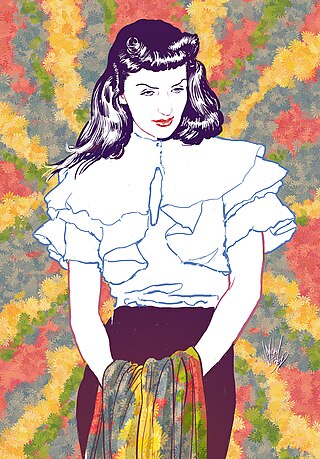
Mary Blair was an American artist, animator, and designer. She was prominent in producing art and animation for The Walt Disney Company, drawing concept art for such films as Alice in Wonderland, Peter Pan, Song of the South and Cinderella. Blair also created character designs for enduring attractions such as Disneyland's It's a Small World, the fiesta scene in El Rio del Tiempo in the Mexico pavilion in Epcot's World Showcase, and an enormous mosaic inside Disney's Contemporary Resort. Several of her illustrated children's books from the 1950s remain in print, such as I Can Fly by Ruth Krauss. Blair was inducted into the group of Disney Legends in 1991.

Artistic Dress was a fashion movement in the second half of the nineteenth century that rejected highly structured and heavily trimmed Victorian trends in favour of beautiful materials and simplicity of design. It arguably developed in Britain in the early 1850s, influenced by artistic circles such as the Pre-Raphaelites, and Dress Reform movements. It subsequently developed into more specific categories such as Aesthetic Dress and Künstlerkleid on the continent.
Bonnie Cashin was an American fashion designer. Considered a pioneer in the design of American sportswear, she created innovative, uncomplicated clothing that catered to the modern, independent woman beginning in the post-war era through to her retirement from the fashion world in 1985.
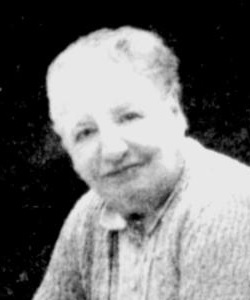
Jessie Franklin Turner was an American fashion designer based in New York in the early 20th century. She was notable for being one of the first American designers to create unique designs, rather than imitating or copying Paris fashions, and was the first American fashion designer to establish a long-term couture business in New York.

Dorothy Wright Liebes was an American textile designer and weaver renowned for her innovative, custom-designed modern fabrics for architects and interior designers. She was known as "the mother of modern weaving".
Sandra Akemi Sakata was an American fashion designer and fashion retailer.
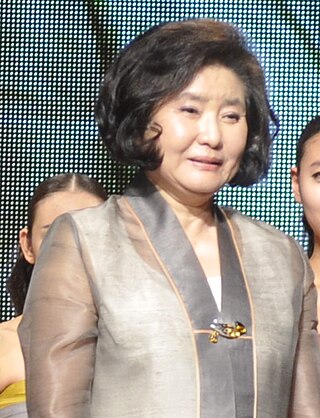
Lee Young-hee was a South Korean fashion designer. She worked on designing hanbok, Korean traditional clothes, to increase awareness of traditional Korean dress in the Western world since the early 1990s.

Anne Fogarty was an American fashion designer, active 1940–1980, who was noted for her understated, ladylike designs that were accessible to American women on a limited income. She started out as a model in New York in 1939, working for Harvey Berin on Seventh Avenue, before studying fashion design. She eventually secured a full-time design job in 1948, and became well-known for full-skirted designs with fitted bodices, inspired by Dior's New Look.
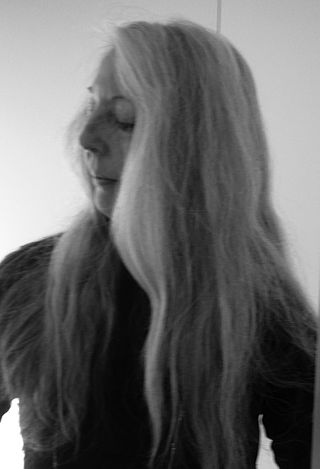
Marianne Mittelholzer, artist name Mascha Mioni is a Swiss painter and textile artist. Her best known creations are in the area of art to wear, the design of garments as an object of art, and wearable art.

Yoshiko Iwamoto Wada is a Japanese textile artist, curator, art historian, scholar, professor, and author. She has received international recognition for her scholarship and expertise in the field of textile art. In 2010, she was named a "Distinguished Craft Educator - Master of Medium" by the James Renwick Alliance of the Smithsonian Institution, who stated: "she is single-handedly responsible for introducing the art of Japanese shibori to this country". In 2016 she received the George Hewitt Myers Award for Lifetime Achievement.

Josefine Pola Stout was an American designer best known for creating fine woolen fabrics. Born in Stryj, she studied with Josef Hoffmann at the Kunstgewerbe Schule in Vienna, and designed for the Wiener Werkstätte before she immigrated to the United States in 1925 with her first husband, architect and designer Wolfgang Hoffmann. Wolfgang and Pola Hoffmann became a prominent interior design team that contributed to the development of American modernism in the early 20th century. They dissolved their successful partnership in 1932, when she married popular mystery author Rex Stout. Pola Stout was an influential textile designer after her second marriage. She was executor of Rex Stout's literary estate after her husband's death in 1975.
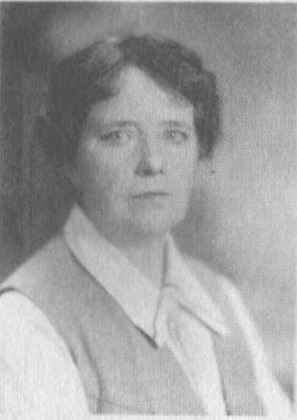
Lillian McNeill Palmer (1871-1961) was an American coppersmith and metalsmith whose work was part of the California Arts and Crafts movement. She worked in tandem with her longtime companion, architect Emily Williams and was the founder of the Women's Business and Professional Club in San Francisco.
Traphagen School of Fashion was an art and design school in operation from 1923 to 1991, and was located at 1680 Broadway in New York City. The school was founded and directed by Ethel Traphagen Leigh (1883–1963) with a focus on the foundational concepts of the American design movement. This was one of the earliest fashion schools and played a role in the development of American fashion by educating over 28,000 students in 68 years of operation.
Joan Schulze is an American artist, lecturer, and poet. Schulze's career spans over five decades: she is best known for her work of contemporary quilts, fiberarts, and collage. Schulze has been named a “pioneer of the art quilt movement,” and her influence has been compared to that of Robert Rauschenberg’s. Her work is in galleries and private collections worldwide including the Renwick Gallery/Smithsonian Institution in Washington DC, the Museum of Arts and Design in New York, & the Oakland Museum of California.

A tanmono is a bolt of traditional Japanese narrow-loomed cloth. It is used to make traditional Japanese clothes, textile room dividers, sails, and other traditional cloth items.

Mary Zicafoose is an American textile artist, weaver, and teacher who specializes in ikat, an ancient technique in which threads are wrapped, tied and resist-dyed before weaving. Zicafoose is the author of Ikat: The Essential Handbook to Weaving Resist-Dyed Cloth (2020). Her works are part of private and public collections, including at least 16 embassies around the world as part of the U.S. Art in Embassies Program.

Linda Gass is an American environmental activist and artist known for brightly colored quilted silk landscapes, environmental works, and public art sculptures, which reflect her passion for environmental preservation, water conservation and land use.

















